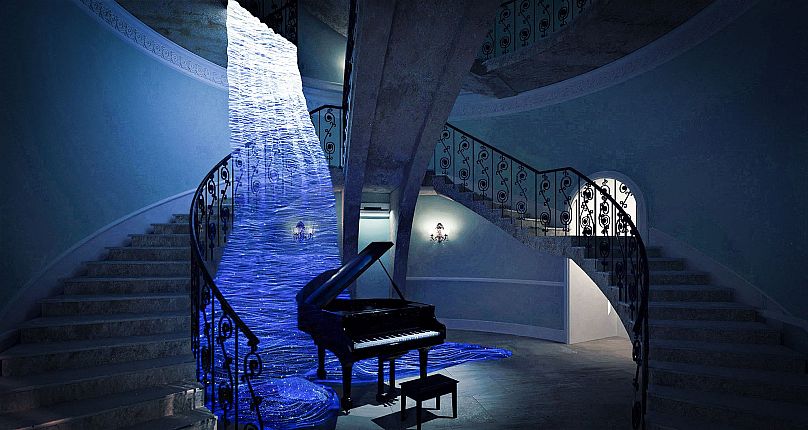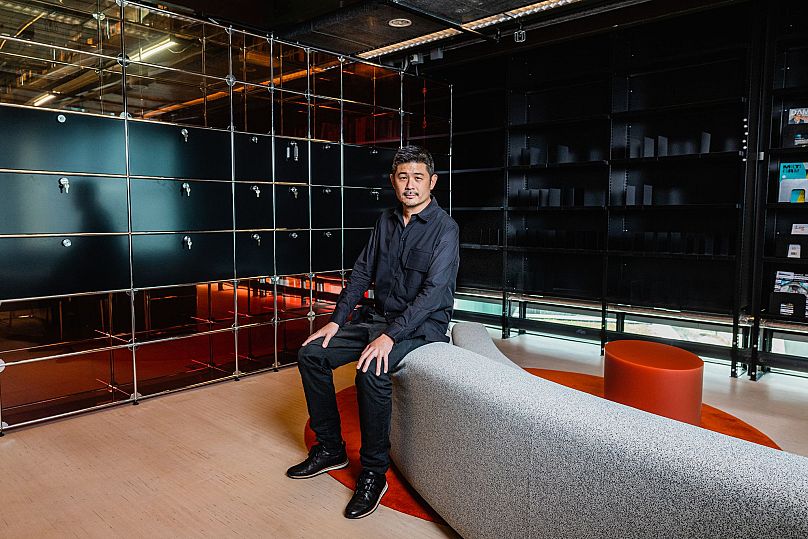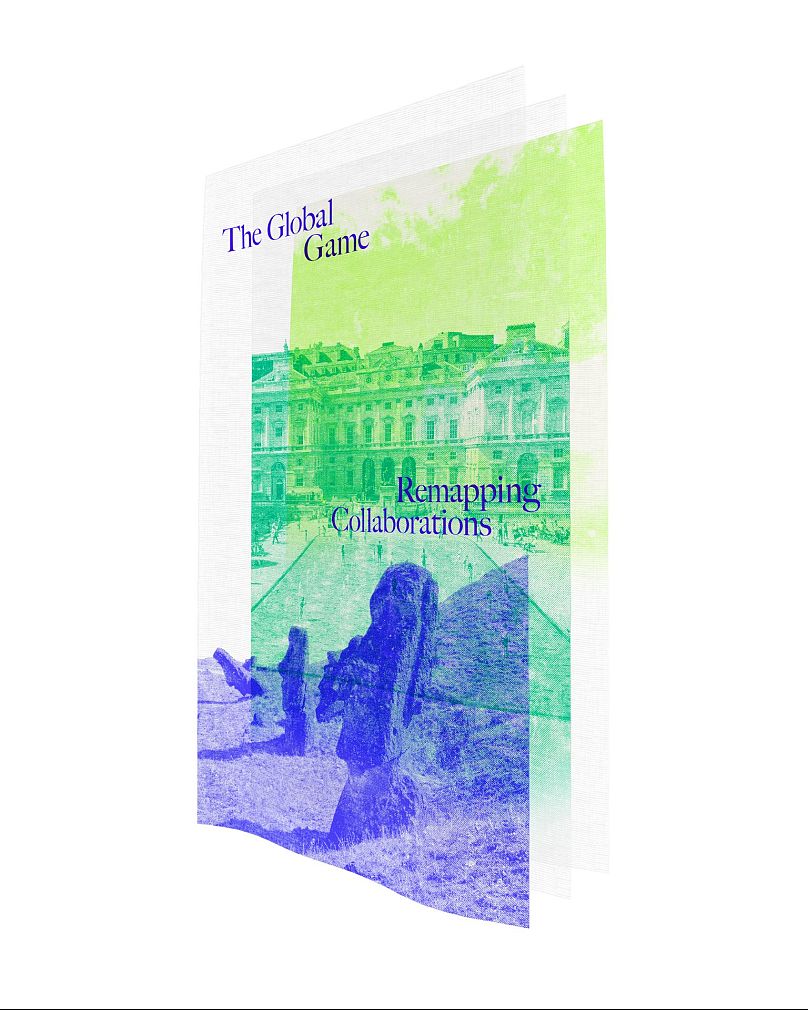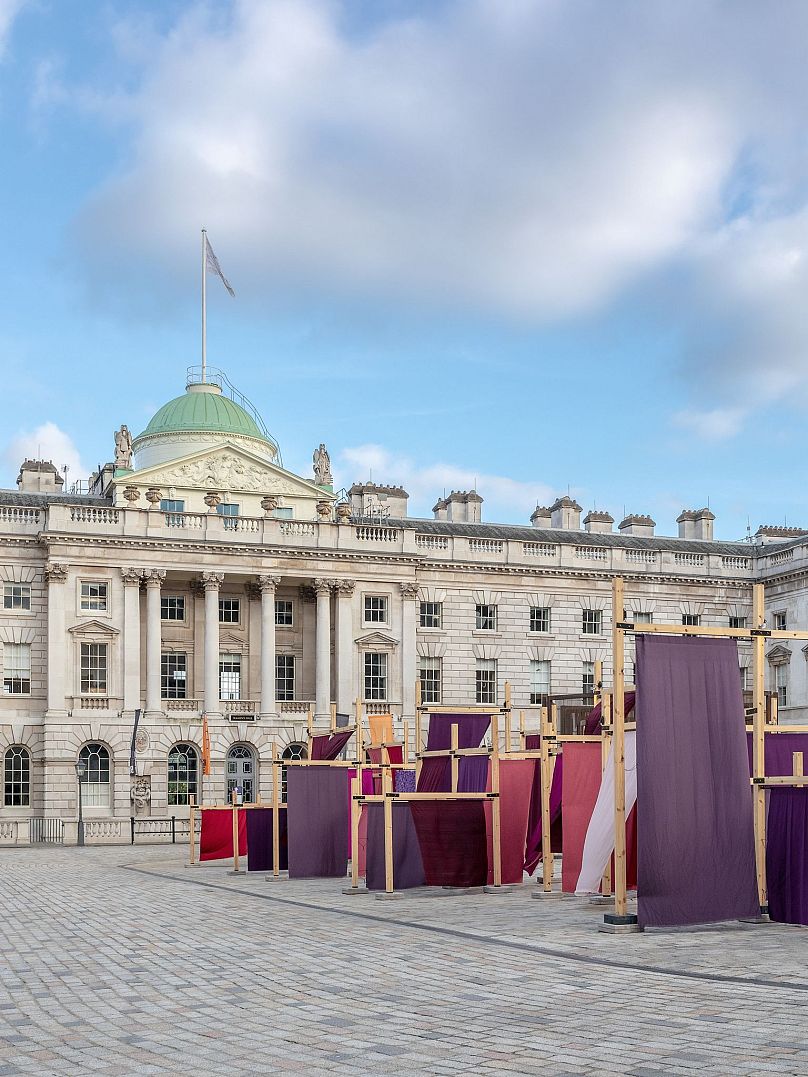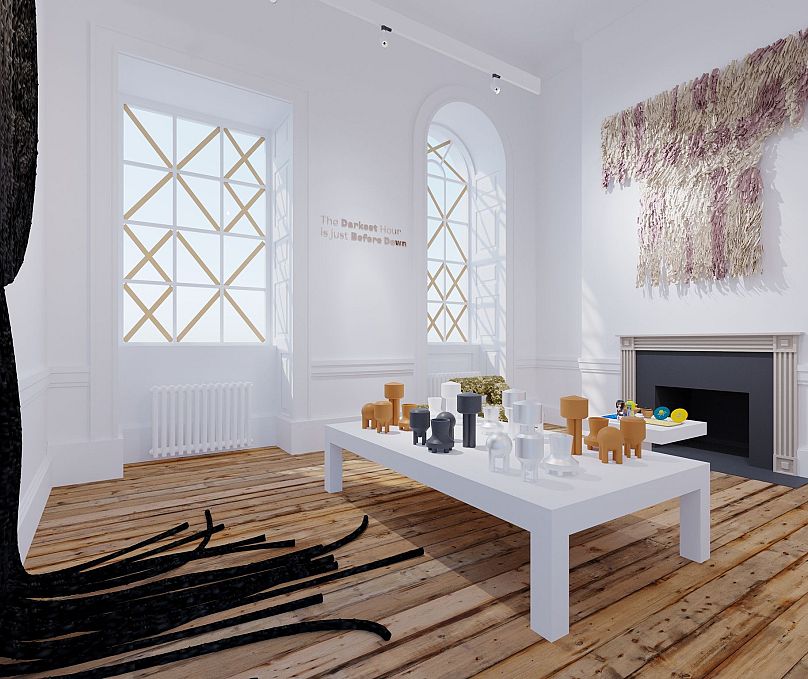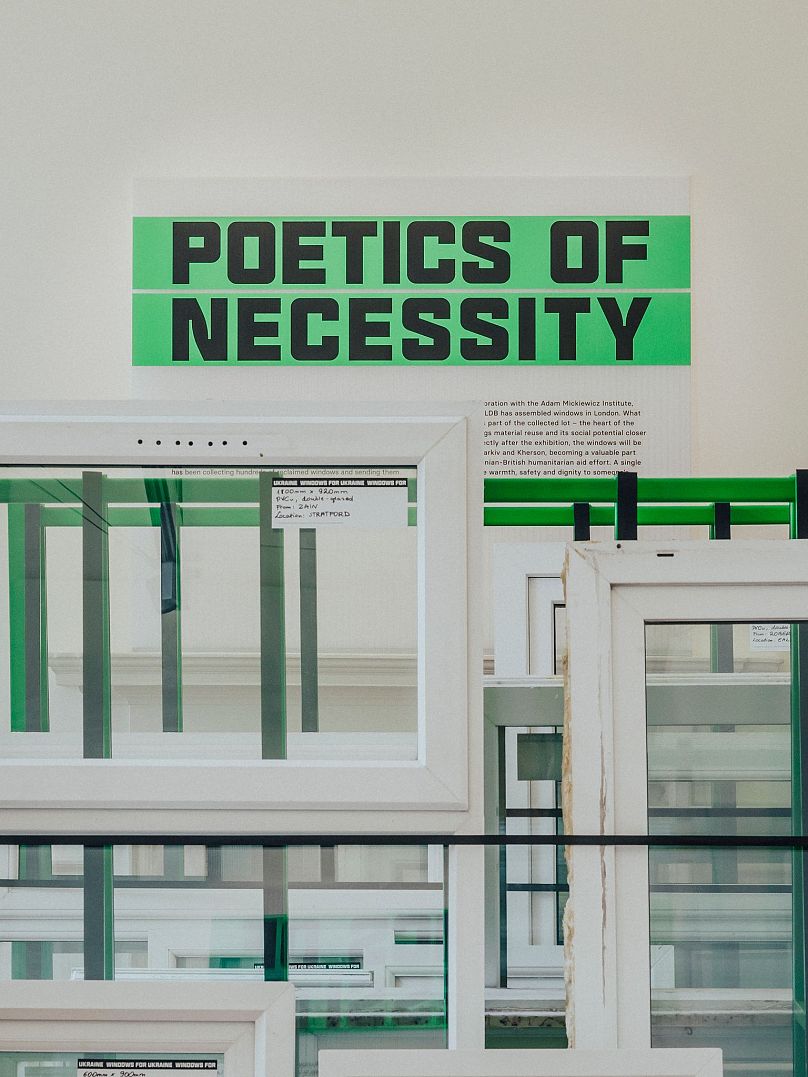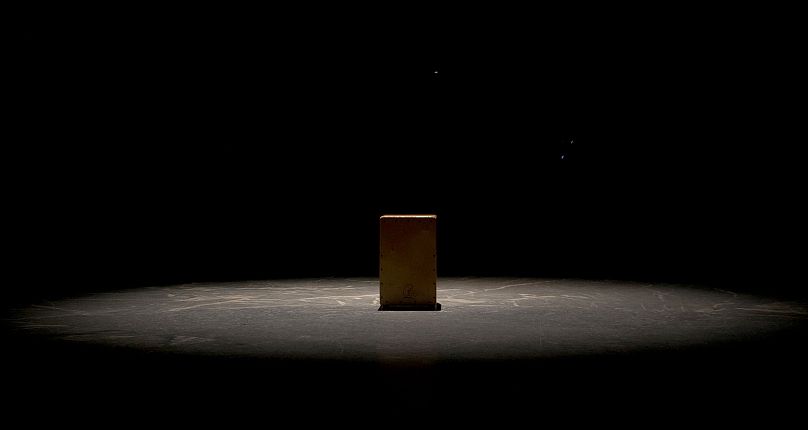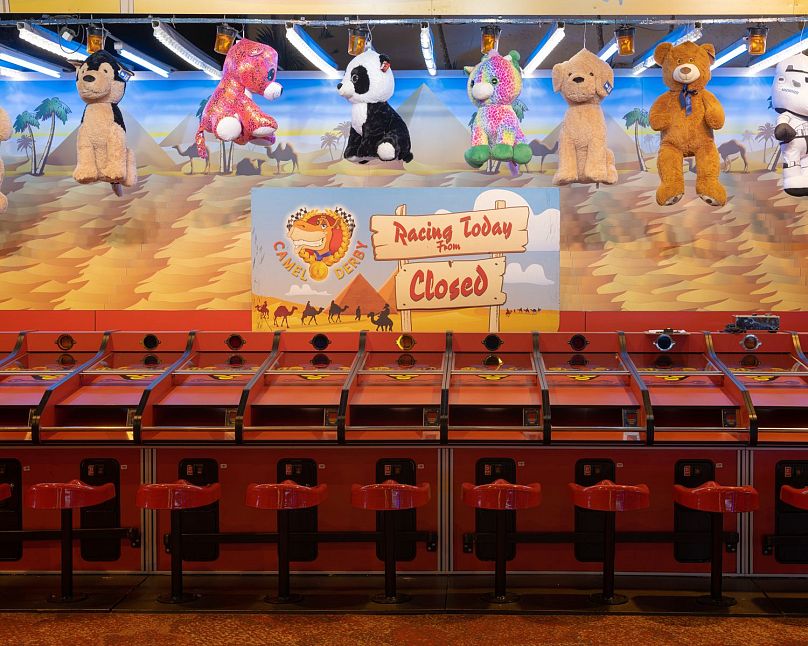Euronews Culture gives you the run down of this year's event, which starts on 1 June, welcoming summer through design.
The London Design Biennale is back for its fourth edition. The event is being held at the city’ iconic Somerset House and promises to bring together designers and creative thinkers from across the world to explore the theme of collaboration and to inspire new forms of international cooperation through design.
The immersive showcase offers visitors a chance to bake bread, see an AI Robot designer in acting, try their hand at weaving a tapestry, experience the inside of a space pod and visit a virtual garden - and that’s just for starters.
This year's edition is the largest yet, with more countries participating than ever before. 45 pavilions from 5 continents will be in place and will involve the efforts of over 50 countries, cities and regions from across the globe.
The Biennale's artistic director is the Nieuwe Instituut, the Netherlands' national museum for architecture, design, and digital culture, headed up by General and Artistic director Aric Chen.
Chen's leadership brings a fresh perspective to the Biennale, experimenting with its national and territorial pavilions format. This year, participants will be asked to explore not only the themes of traditional collaboration but to work with others using an online game.
‘The Global Game: Remapping Collaborations’ encourages users to find new ways for ‘players’ to partner with each other, Chen explains: “The Global Game: Remapping Collaborations’ aims to create an alternative geopolitical landscape driven not by competition nor conflict, but rather cooperation,” adding, ‘We all agree that global challenges require global collaboration. This is easier said than done, but in some small way, we hope real international exchanges will arise from this biennial in a way that also invites visitors to become part of the process”.
Pentagram will feature heavily too, having created the visual identity of the 2023 event.
The world-renowned studio took inspiration from the concepts of origins, borders, and collaboration, drawing on influences from across the world but with a particular focus on the landmarks of London, with the aim of connecting the show even more deeply with the host city.
Pentagram’s design team worked with various visuals to create a 3D replica of the Biennale, bringing the idea of the event as an experience to life.
That’s not all - the pavilions are set to be a real highlight and include displays from Abu Dhabi, the humanoid Ai-Da Robot, Chatham House, Chile, Democratic Republic of the Congo, the Swiss museum Mudac, a collaboration between Spain and Peru, The Delegation of the European Union to the United Kingdom and Ukraine to name just a few.
Malta is also set to present a ‘village square’ installation featuring textiles designed and made with traditional Phoenician-Maltese techniques, which aim to shine a spotlight on ancient approaches to the urban environment.
There will be attention brought to the war in Ukraine too, with a great deal of contributions from the country. Ukrainian designers will work together to highlight the richness of the region’s creativity and highlight the importance of the role of collaboration in fostering connection and communication in a time of war.
Poland’s project will lend its support too, with a display spotlighting cross-border collaboration between the two nations as well as referencing aid given by Poland to Ukraine which helps people who have lost their homes.
Another stand out collaboration will be Spain and Peru’s collaborative pavilion, which will focus on the biennale’s theme and include work inspired by the ‘cajón’, a traditional Afro-Peruvian percussion instrument that later became the Spanish instrument of flamenco music.
Also new for 2023 is the addition of Eureka, an initiative which features research centres' design-led innovation. Eureka is created by the producers of London Design Biennale and London Design Festival. It aims to highlight the creative thinking taking place inside some of the world's leading university research departments and shine a light on the importance of invention and creativity for the world's future problem-solvers.
Also new for this edition of the Biennale is an increased jury. New members are Nigerian architect Tosin Oshinowo and twin brothers Rashid and Ahmed Bin Shabib, both urbanists and researchers of cities across the Middle East and North Africa.
The jury will give awards for the most outstanding overall contribution, the most inspiring interpretation of the theme and the contribution with the most exceptional design, while visitors to the event will be able to vote for the winner of the London Design Biennale Public Medal.
The Biennale runs until 25 June and while less established than the more famous Milan or Venice versions - the latter of which is currently ongoing - it’s likely to be an impressive and unique showcase of global talent, innovative ideas and design-led solutions, all within the vibrant backdrop of the design capital of London.












